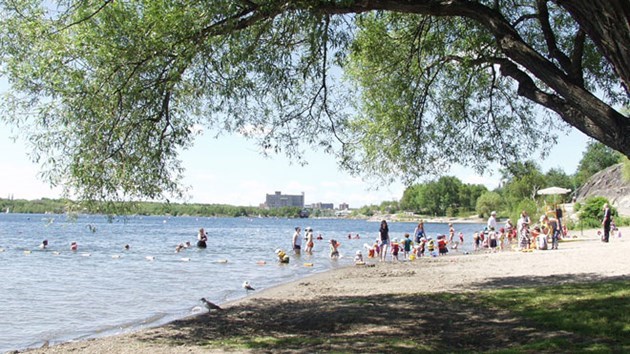Although the snows of winter are over for this season, there will be many stormy years ahead, and the use of road salt to keep our streets safe will continue to threaten urban lakes close to roadways, including Lake Ramsey, which provides drinking water for more than 50,000 Sudbury residents.
Road salt is sodium chloride, which dissolves in water and cannot be removed by traditional storm water or municipal drinking water treatment measures. Sodium in Lake Ramsey is more than 50 mg per litre — almost three times the provincial level of 20mg/L, requiring physicians to notify patients who may have sodium-related health issues.
Also, salt can make the lake more susceptible to invasive species and harmful forms of algae. It has been reported that “It takes a lot of salt to kill a lake, but a small amount can make it sick.”
What’s to be done?
Alternative substances are many times more expensive than ordinary road salt and are not without ecological drawbacks. We must simply use less, and certainly not increase road surface area around Lake Ramsey as proposed in the City Transportation Study Report that would triple the road surface area by expansion of Ramsey Lake Road and the Howey, Bellevue, Bancroft corridor and building of Silver Hills Drive.
A number of environmental groups and individuals have written the MOECC expressing concerns about the additional salt that would be necessary to be applied, thereby, further contaminating the lake.
The ministry has advised that these concerns will be addressed.
However, even now, the city is increasing the road surface area of Second Avenue under reconstruction by almost three times, which will result, during an average winter, in more than 11,000 kilograms (12 tons) of additional salt being deposited on the roadway and eventually entering Ramsey Lake through Frobisher Creek in the Second Avenue sub-watershed to the lake, which last year, already had sodium outflow levels of over 200mg/L.
Lake Ramsey is valuable, not only as a drinking water source, but as one of our major recreational areas. It is the jewel in the crown of our more than 330 lakes, and everything possible must be done to preserve this valuable resource for our own use and those of generations to come.
Let your councillor, mayor and local provincial and federal politicians know that you are concerned as well and encourage measures to protect our water resources.
John Lindsay
Sudbury
